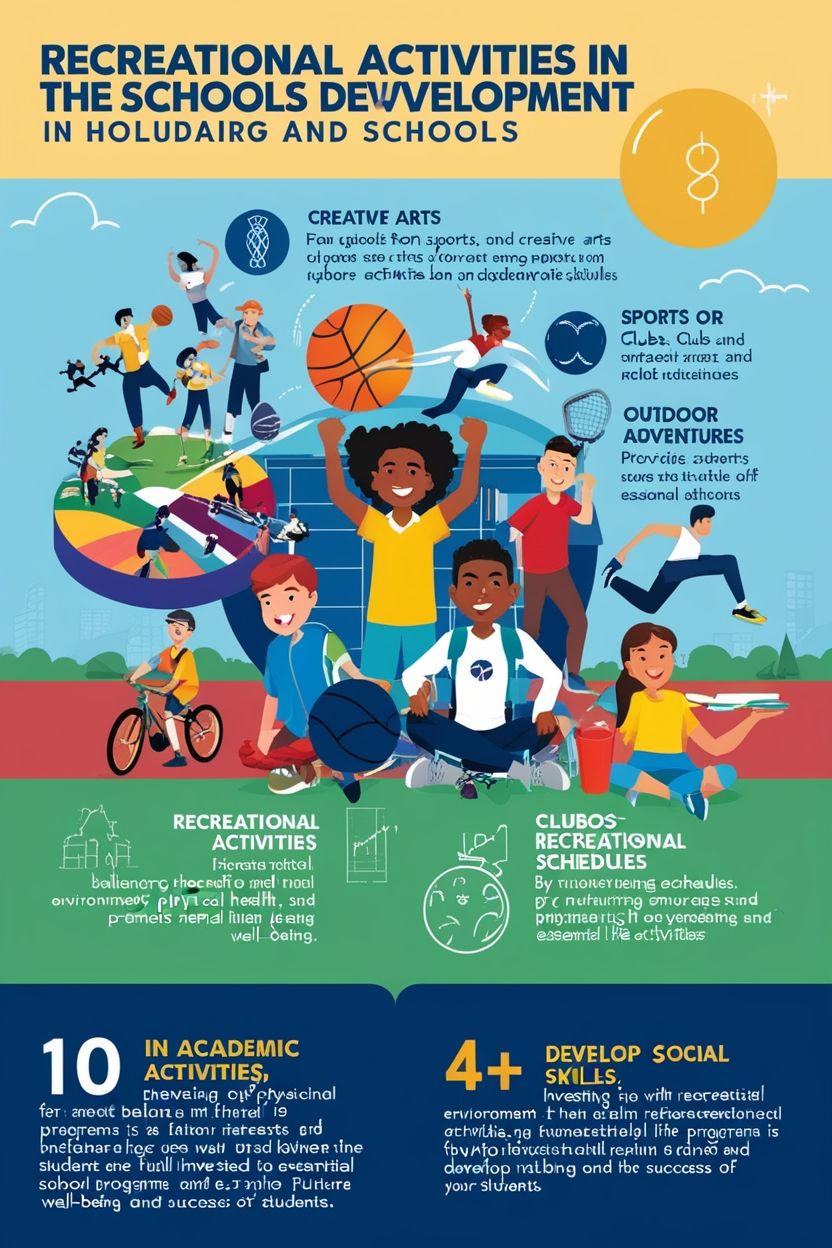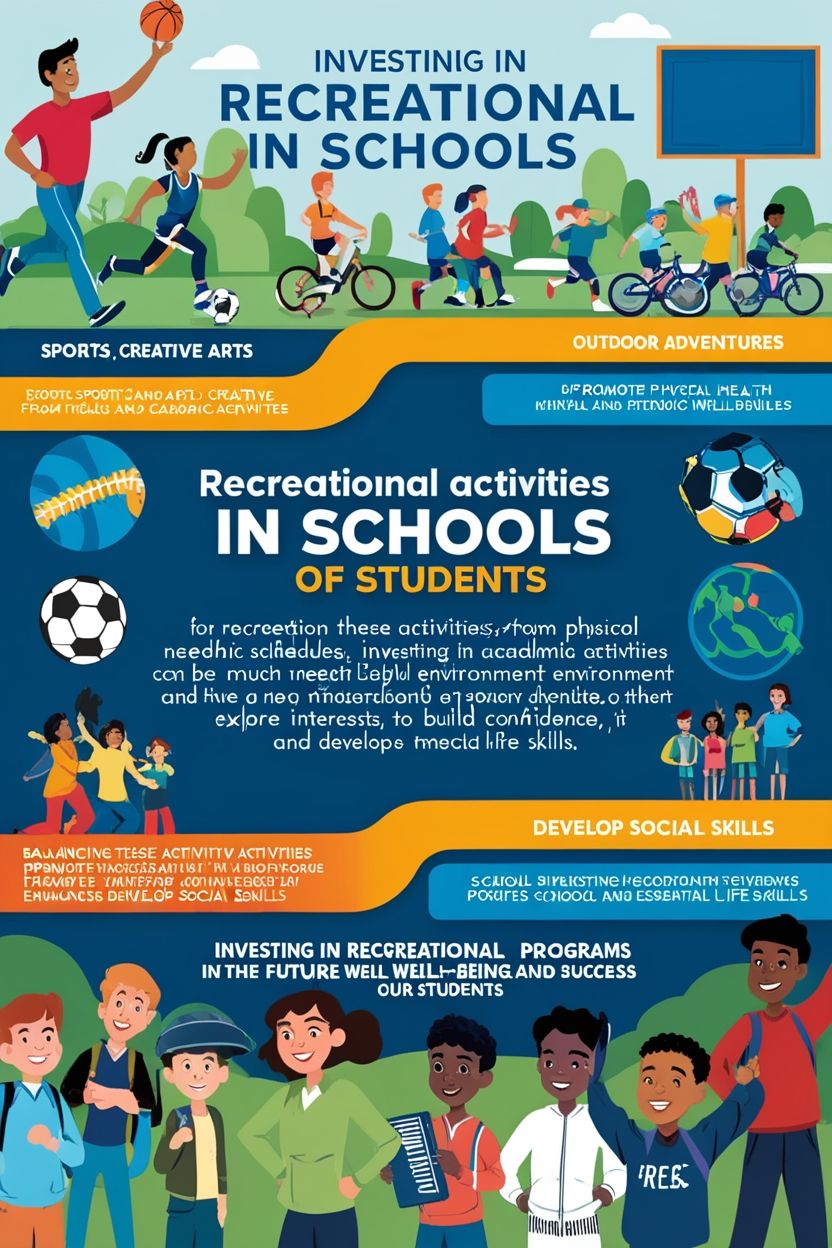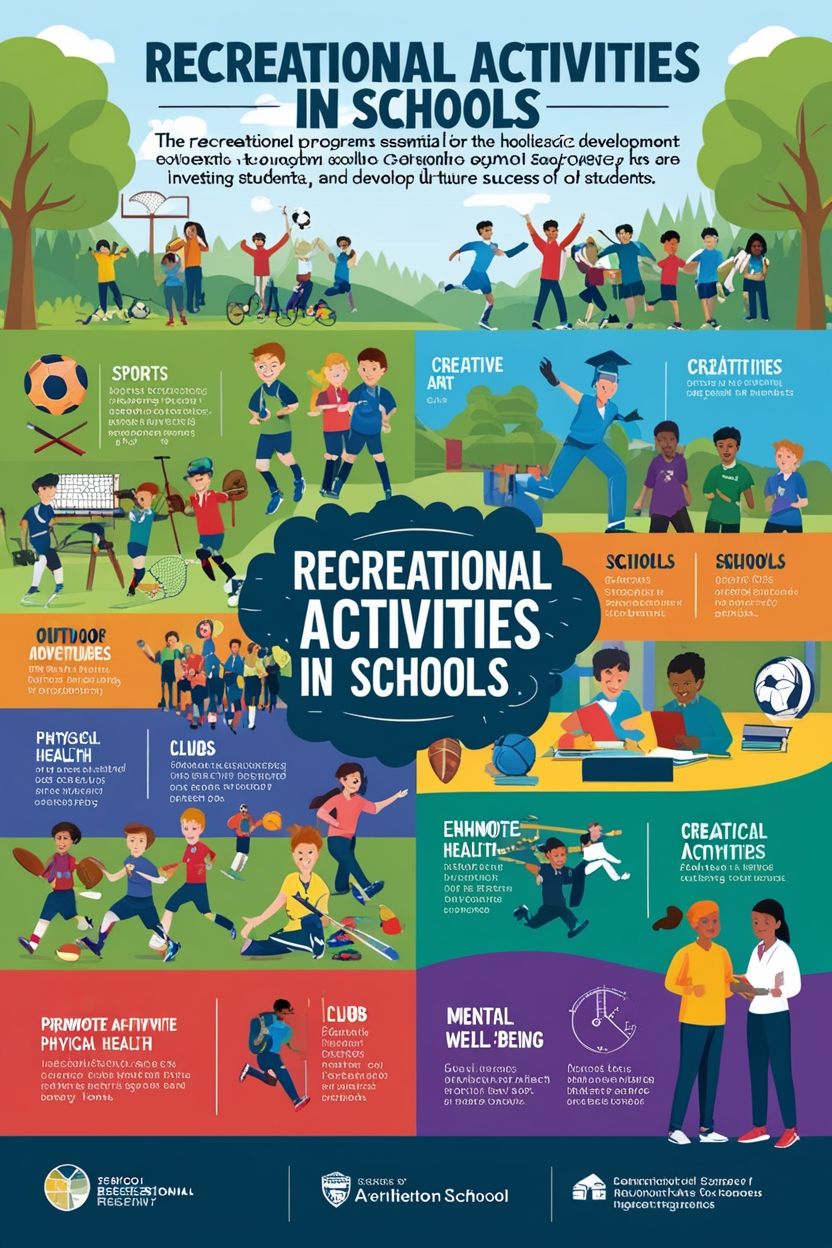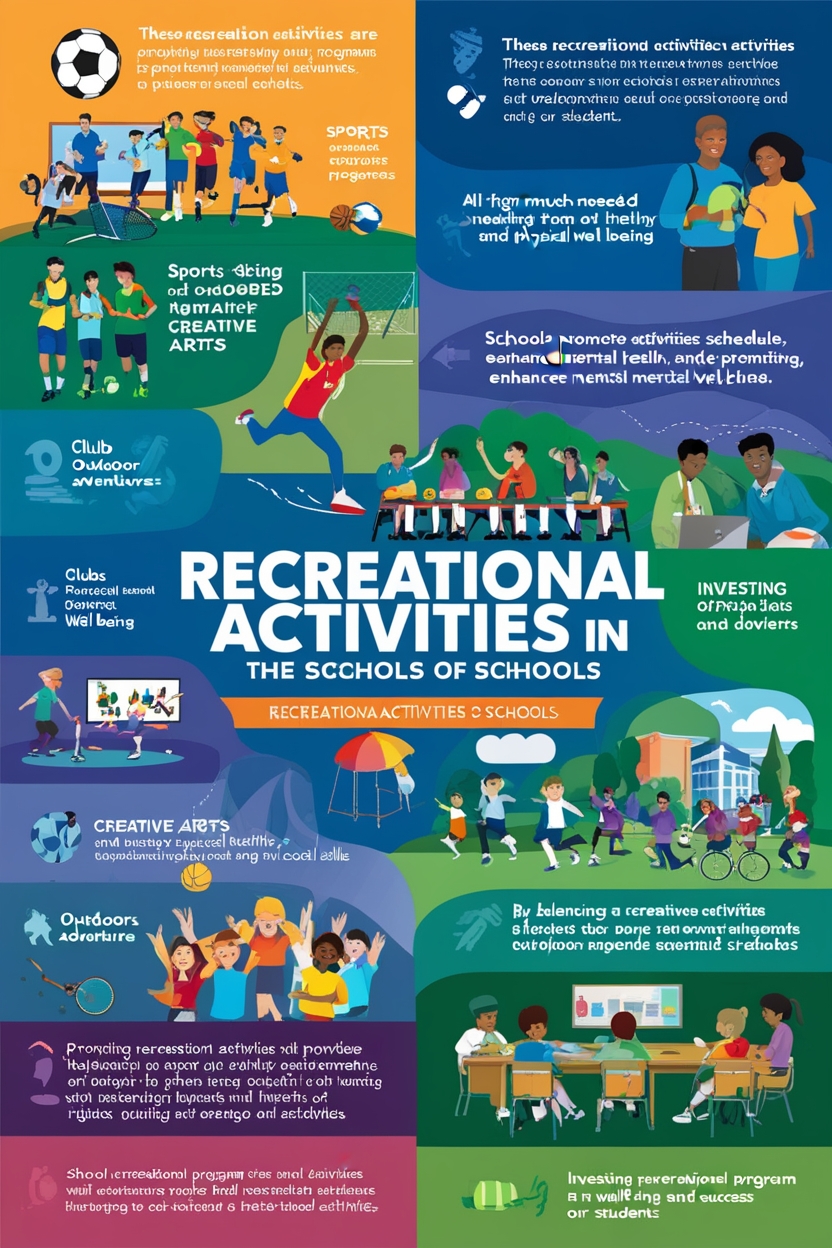Introduction
Recreational Activities at School play a vital role in the holistic development of students. They offer a break from the rigorous academic schedule, promote physical fitness, enhance social skills, and contribute to mental well-being. In schools, these activities are not just about fun; they are instrumental in shaping well-rounded individuals. This article explores the various types of recreational activities at school, their benefits, and how they can be effectively integrated into the school curriculum.

Types of Recreational Activities
- Sports and Physical Education:
- Team Sports: Football, basketball, volleyball, and cricket encourage teamwork, discipline, and strategic thinking.
- Individual Sports: Athletics, swimming, tennis, and gymnastics help students set personal goals and build self-discipline.
- Fitness Programs: Yoga, aerobics, and martial arts promote physical fitness and mental relaxation.
- Creative Arts:
- Visual Arts: Painting, drawing, sculpture, and crafts stimulate creativity and allow students to express themselves.
- Performing Arts: Music, dance, and drama help in developing confidence, public speaking skills, and emotional expression.
- Clubs and Societies:
- Academic Clubs: Science, math, and debate clubs foster intellectual curiosity and enhance problem-solving skills.
- Hobby Clubs: Photography, gardening, and cooking clubs offer students a chance to explore new interests and develop new skills.
- Outdoor Activities:
- Nature Walks and Field Trips: These activities connect students with nature and provide experiential learning opportunities.
- Adventure Sports: Activities like rock climbing, trekking, and camping build resilience and a sense of adventure.
Benefits of Recreational Activities
- Physical Health: Engaging in sports and physical activities helps combat obesity, improves cardiovascular health, and strengthens muscles and bones. Regular physical activity also boosts the immune system and enhances overall physical fitness.
- Mental Health: Recreational activities reduce stress, anxiety, and depression. They provide a healthy outlet for emotions and improve mood. Creative activities, in particular, have a therapeutic effect, allowing students to express and manage their emotions.
- Social Skills: Participation in team sports and group activities fosters collaboration, communication, and conflict resolution skills. It helps students build friendships, develop empathy, and learn the importance of teamwork and cooperation.
- Academic Performance: Recreational activities enhance cognitive functions such as memory, attention, and problem-solving skills. Students who engage in regular physical activity and creative arts tend to perform better academically as these activities stimulate brain function and improve concentration.
- Personal Development: Through recreational activities, students develop leadership skills, time management, and a sense of responsibility. They learn to set goals, handle victories and losses gracefully, and build self-esteem and confidence.

Effective Integration into School Curriculum
- Balanced Schedule: Schools should create a balanced schedule that allocates adequate time for both academic and recreational activities. This ensures that students do not feel overwhelmed by academics and have ample time for relaxation and fun.
- Inclusive Programs: Recreational programs should be inclusive, catering to the interests and abilities of all students. Schools should offer a variety of activities to ensure that every student finds something they enjoy and can participate in.
- Qualified Instructors: Hiring qualified instructors and coaches for sports, arts, and other activities ensures that students receive proper guidance and training. This helps in maximizing the benefits of these activities and ensuring student safety.
- Parental Involvement: Encouraging parental involvement in recreational activities can enhance student participation and motivation. Parents can volunteer for events, support their children’s interests, and reinforce the importance of a balanced lifestyle.
- Resources and Facilities: Schools should invest in adequate resources and facilities for recreational activities. This includes sports equipment, art supplies, musical instruments, and safe spaces for outdoor activities.
- Integration with Curriculum: Recreational activities should be integrated into the curriculum rather than being treated as extracurricular. For instance, physical education classes, art and music lessons, and club activities should be scheduled within regular school hours.

Challenges and Solutions
- Limited Resources: Many schools face budget constraints that limit their ability to offer a wide range of recreational activities. Solutions include seeking sponsorships, organizing fundraising events, and applying for grants dedicated to physical education and arts programs.
- Lack of Space: Urban schools often struggle with limited space for sports and outdoor activities. Schools can make use of local community centers, parks, and sports complexes to provide students with the necessary facilities.
- Academic Pressure: The emphasis on academic performance can lead to a reduced focus on recreational activities. Schools should educate parents and students about the importance of a balanced lifestyle and the positive impact of recreation on academic success.
- Safety Concerns: Ensuring the safety of students during recreational activities is paramount. Schools should implement strict safety protocols, provide proper training to instructors, and ensure that all equipment and facilities are safe and well-maintained.
Conclusion
Recreational activities are an essential component of a well-rounded education. They contribute significantly to the physical, mental, and social development of students. By effectively integrating these activities into the school curriculum, schools can create a nurturing environment that supports the overall growth and well-being of their students. As educators and parents, it is crucial to recognize the value of recreation in education and work together to provide diverse and engaging opportunities for all students.

1d0mtl
rzh75m
c7eqzy
I was suggested this blog by my cousin. I’m not sure whether this post is written by him as no one else know such detailed about my problem. You are incredible! Thanks!
I blog frequently and I seriously thank you for your information. This article has really peaked my interest.
I’m going to take a note of your site and keep checking for new
information about once a week. I opted in for your RSS feed
as well.
Feel free to surf to my webpage … nordvpn coupons inspiresensation (http://t.co/)
I am now not certain the place you’re getting your information, however good topic. I must spend some time studying much more or working out more. Thank you for fantastic info I used to be on the lookout for this info for my mission.
I do not even know how I ended up here, but I thought this post was good. I do not know who you are but definitely you’re going to a famous blogger if you are not already 😉 Cheers!
I went over this web site and I believe you have a lot of excellent information, saved to bookmarks (:.
Great site. A lot of useful information here. I¦m sending it to several buddies ans additionally sharing in delicious. And certainly, thanks for your sweat!
Hmm is anyone else having problems with the images on this blog loading? I’m trying to figure out if its a problem on my end or if it’s the blog. Any feed-back would be greatly appreciated.
Hey there just wanted to give you a quick heads up. The words in your post seem to be running off the screen in Internet explorer. I’m not sure if this is a formatting issue or something to do with web browser compatibility but I figured I’d post to let you know. The design and style look great though! Hope you get the issue solved soon. Kudos
Hello. impressive job. I did not anticipate this. This is a fantastic story. Thanks!
Great wordpress blog here.. It’s hard to find quality writing like yours these days. I really appreciate people like you! take care
I am constantly searching online for articles that can benefit me. Thank you!
There is noticeably a bundle to know about this. I assume you made certain nice points in features also.
I appreciate, cause I found just what I was looking for. You’ve ended my 4 day long hunt! God Bless you man. Have a nice day. Bye
This is very interesting, You’re a very skilled blogger. I have joined your rss feed and look forward to seeking more of your excellent post. Also, I have shared your website in my social networks!